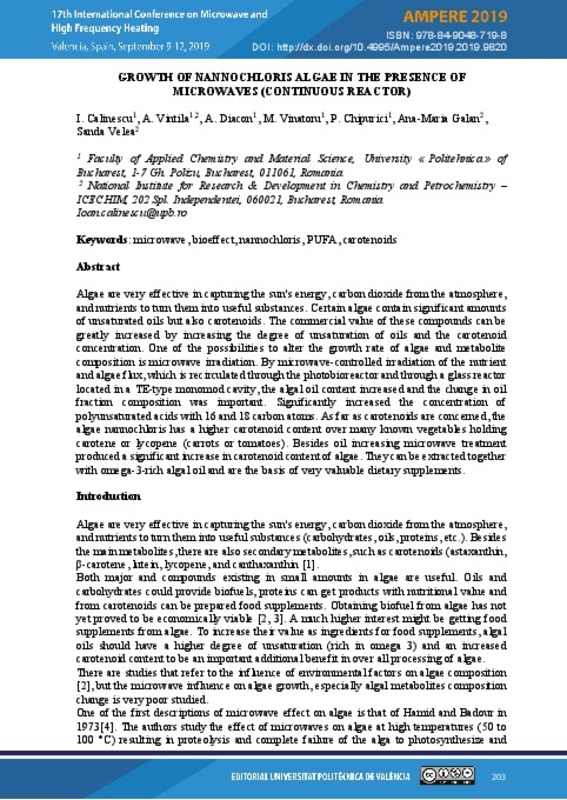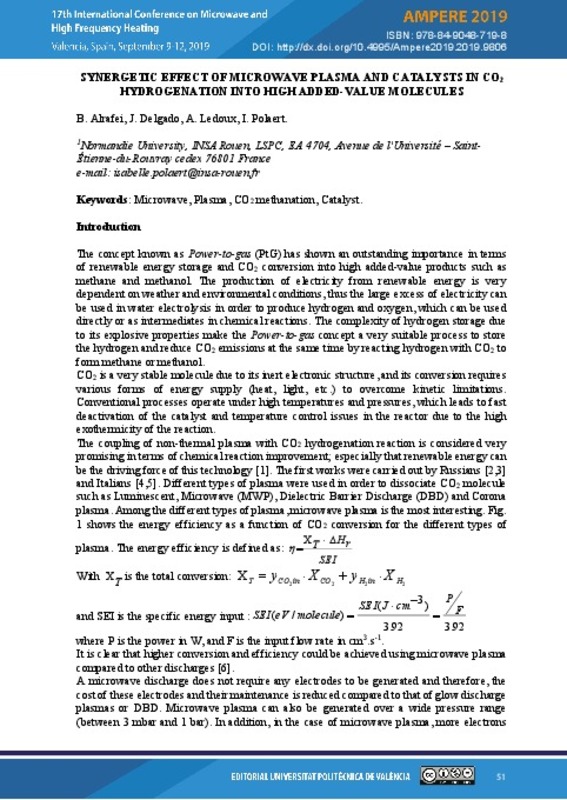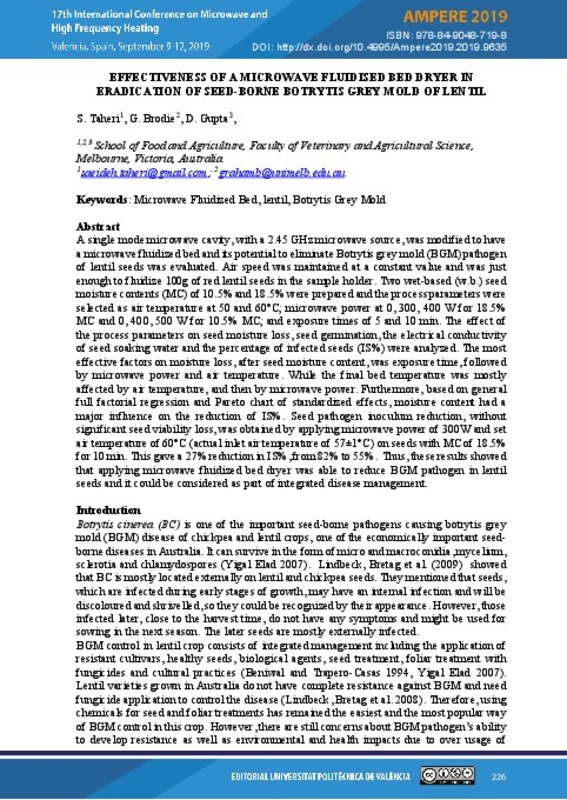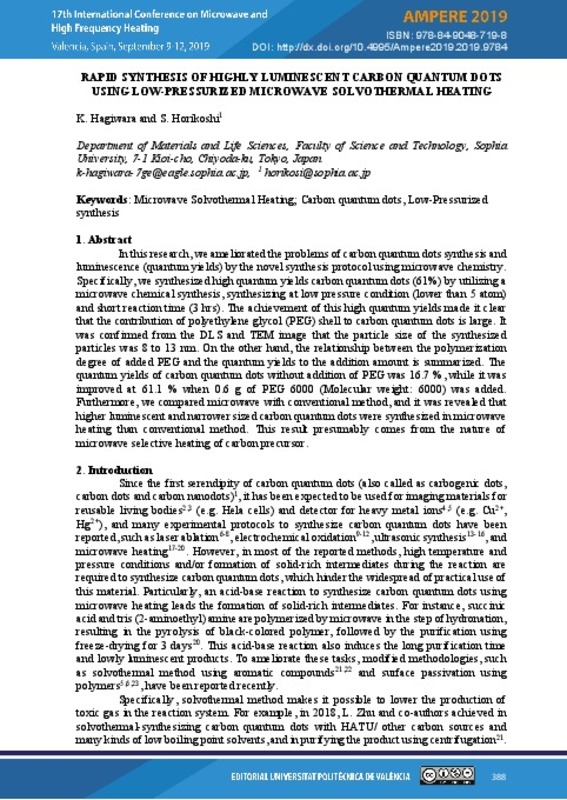JavaScript is disabled for your browser. Some features of this site may not work without it.
Buscar en RiuNet
Listar
Mi cuenta
Estadísticas
Ayuda RiuNet
Admin. UPV
Growth of nannochloris algae in the presence of microwaves (continuous reactor)
Mostrar el registro sencillo del ítem
Ficheros en el ítem
| dc.contributor.author | Calinescu, Ioan
|
es_ES |
| dc.contributor.author | Vintila, Alin
|
es_ES |
| dc.contributor.author | Diacon, Aurel
|
es_ES |
| dc.contributor.author | Vinatoru, Mircea
|
es_ES |
| dc.contributor.author | Chipurici, P.
|
es_ES |
| dc.contributor.author | Galan, Ana Maria
|
es_ES |
| dc.contributor.author | Velea, Sanda
|
es_ES |
| dc.date.accessioned | 2019-11-13T09:08:26Z | |
| dc.date.available | 2019-11-13T09:08:26Z | |
| dc.date.issued | 2019-10-15 | |
| dc.identifier.isbn | 9788490487198 | |
| dc.identifier.uri | http://hdl.handle.net/10251/130889 | |
| dc.description.abstract | [EN] Algae are very effective in capturing the sun's energy, carbon dioxide from the atmosphere, and nutrients to turn them into useful substances (carbohydrates, oils, proteins, etc.). Besides the main metabolites, there are also secondary metabolites, such as carotenoids (astaxanthin, β-carotene, lutein, lycopene, and canthaxanthin [1]). Both major and compounds existing in small amounts in algae are useful. Oils and carbohydrates could provide biofuels, proteins can get products with nutritional value and from carotenoids can be prepared food supplements. Obtaining biofuel from algae has not yet proved to be economically viable [2, 3]. A much higher interest might be getting food supplements from algae. To increase their value as ingredients for food supplements, algal oils should have a higher degree of unsaturation (rich in omega 3) and an increased carotenoid content to be an important additional benefit in over all processing of algae. There are studies that refer to the influence of environmental factors on algae composition [2], but the microwave influence on algae growth, especially algal metabolites composition change is very poor studied. In this paper, besides the experiments for the activation of algal growth in discontinuous reactors [4] additional work was conducted in a continuous photobioreactor. The goal was checking not only the growth of microalgae but also their content in polyunsaturated oil and in carotenoids. By microwave-controlled irradiation of the nutrient and algae flux, which is recirculated through the photobioreactor and through a glass reactor located in a TE-type monomod cavity, the lipid content of the algae increased, but only, the modification of the lipid fraction content was significantly increased in the concentration of polyunsaturated acids with 16 and 18 carbon atoms. As far as carotenoids are concerned, the algae nannochloris has a higher carotenoid content over many known vegetables holding carotene or lycopene (carrots or tomatoes). Besides oil increasing microwave treatment produced a significant increase in carotenoid content of algae. They can be extracted together with omega-3-rich algal oil and are the basis of very valuable dietary supplements. | es_ES |
| dc.description.sponsorship | The authors acknowledge the financial support received from the Competitiveness Operational Programme 2014-2020, Action 1.1.4: Attracting high-level personnel from abroad in order to enhance the RD capacity, project: P_37_471, „Ultrasonic/Microwave Nonconventional Techniques as new tools for nonchemical and chemical processes”, financed by contract: 47/05.09.2016 | es_ES |
| dc.format.extent | 7 | es_ES |
| dc.language | Inglés | es_ES |
| dc.publisher | Editorial Universitat Politècnica de València | es_ES |
| dc.relation.ispartof | AMPERE 2019. 17th International Conference on Microwave and High Frequency Heating | es_ES |
| dc.rights | Reconocimiento - No comercial - Sin obra derivada (by-nc-nd) | es_ES |
| dc.subject | Energy Production by Microwaves | es_ES |
| dc.subject | Microwave CVD | es_ES |
| dc.subject | EM Modelling | es_ES |
| dc.subject | Microwave Material interaction | es_ES |
| dc.subject | Dielectric Properties | es_ES |
| dc.subject | Dielectric Properties Measurement | es_ES |
| dc.subject | Solid State Microwave | es_ES |
| dc.subject | Microwave Processing | es_ES |
| dc.subject | Microwave Chemistry | es_ES |
| dc.subject | Microwave applicators design | es_ES |
| dc.title | Growth of nannochloris algae in the presence of microwaves (continuous reactor) | es_ES |
| dc.type | Capítulo de libro | es_ES |
| dc.type | Comunicación en congreso | es_ES |
| dc.identifier.doi | 10.4995/AMPERE2019.2019.9820 | |
| dc.relation.projectID | info:eu-repo/grantAgreement/Government of Romania//COP-P_37_471/ | es_ES |
| dc.rights.accessRights | Abierto | es_ES |
| dc.description.bibliographicCitation | Calinescu, I.; Vintila, A.; Diacon, A.; Vinatoru, M.; Chipurici, P.; Galan, AM.; Velea, S. (2019). Growth of nannochloris algae in the presence of microwaves (continuous reactor). En AMPERE 2019. 17th International Conference on Microwave and High Frequency Heating. Editorial Universitat Politècnica de València. 203-209. https://doi.org/10.4995/AMPERE2019.2019.9820 | es_ES |
| dc.description.accrualMethod | OCS | es_ES |
| dc.relation.conferencename | Ampere 2019 | es_ES |
| dc.relation.conferencedate | Septiembre 09-12,2019 | es_ES |
| dc.relation.conferenceplace | Valencia, Spain | es_ES |
| dc.relation.publisherversion | http://ocs.editorial.upv.es/index.php/AMPERE2019/AMPERE2019/paper/viewFile/9820/4991 | es_ES |
| dc.description.upvformatpinicio | 203 | es_ES |
| dc.description.upvformatpfin | 209 | es_ES |
| dc.type.version | info:eu-repo/semantics/publishedVersion | es_ES |
| dc.relation.pasarela | OCS\9820 | es_ES |
| dc.contributor.funder | European Regional Development Fund | |
| dc.contributor.funder | Government of Romania |
Este ítem aparece en la(s) siguiente(s) colección(ones)
-
Ampere 2019 [66]











